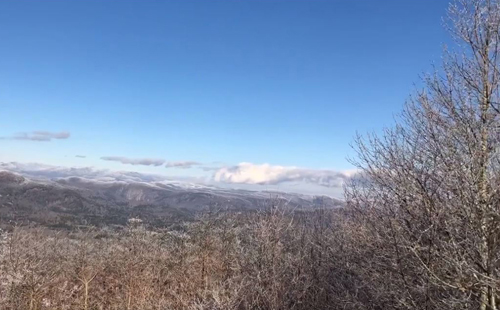Species Decline
New Audubon report shows species decline
By Scott Nicholson
The National Audubon Society's annual "State of the Bird" report for 2004 shows continuing decline for most bird species, and a local Audubon representative said local trends mimic national trends.
The national report from the bird conservationist organization found 70 percent of grassland bird species are in decline and 36 percent of shrub-land birds are in decline, while 25 percent of forest birds are in decline. The figures have been measured since 1966 and development and decline of habitat are the biggest reasons cited by conservationists.
Curtis Smalling, Boone resident and member of Audubon North Carolina, said about 28 percent of all bird species are showing decline since 1966.
He said the decline locally is due to a loss of farmland, meaning there are fewer pastures and fallow fields for grassland birds. Additionally, more people are planting exotic landscaping grasses with which the birds might not be familiar. Smalling said shrub and scrub land was in decline because many people find it unsightly and either clear it or let it go to forest.
Smalling said not only are habitats declining, but the quality of habitats is declining. "The birds doing the best are the ones that live in the suburbs," Smalling said. "They're ones who like yards with trees. There are birds that do quite well with people, such as cardinals."
Smalling said middle-aged and older people tend to notice more wildlife around, including smaller mammals such as raccoons and skunks that are bird predators. Those mammals in turn have lost their larger predators, such as mountain lions and bobcats.
"Most of our species in the mountains that need large, unbroken tracts of land are declining," Smalling said. As parcels get broken up and developed, fewer continuous stretches of habitat are available.
On the flip side, some bird species are expanding in numbers, such as red-eyed verios, blue jays, and crows. The problem is that those are already the most common species, so the bird population becomes more homogenized.
The Audubon Society came out with a list of policy implications for the declines in its annual report. Chief among those is a stronger commitment to protecting public lands, especially wildlife refuges, national and state parks, and national parks. Smalling said even municipal parks have a place in bird habitat.
"We like folks to recognize diversity out there," Smalling said. "Be aware of (land use) policy, and be aware of your favorite places. Get involved. That can mean anything from writing a letter to taking a walk every week to make sure everything looks right." Smalling said one instance where local land use policy might affect habitat is in the Wilson Creek area near Grandfather Mountain. Right now it is a wilderness study area, but changes to roadless rules might return the area to a regular national forest and potential roads and logging, altering the habitat.
The Audubon Society also said conservation programs included in the Farm Bill have the best chance to improve habitat on agricultural lands. Invasive bird species are also a problem, and the organization favors a more international conservation approach due to seasonal bird migration.
Smalling said the High Country has been fortunate not to have any endangered bird species federally listed that might bring land-use restrictions. He said such restrictions are rare on the East Coast, but the best way to prevent them is to make sure adequate habitat is preserved. Conservation will also help other species.


